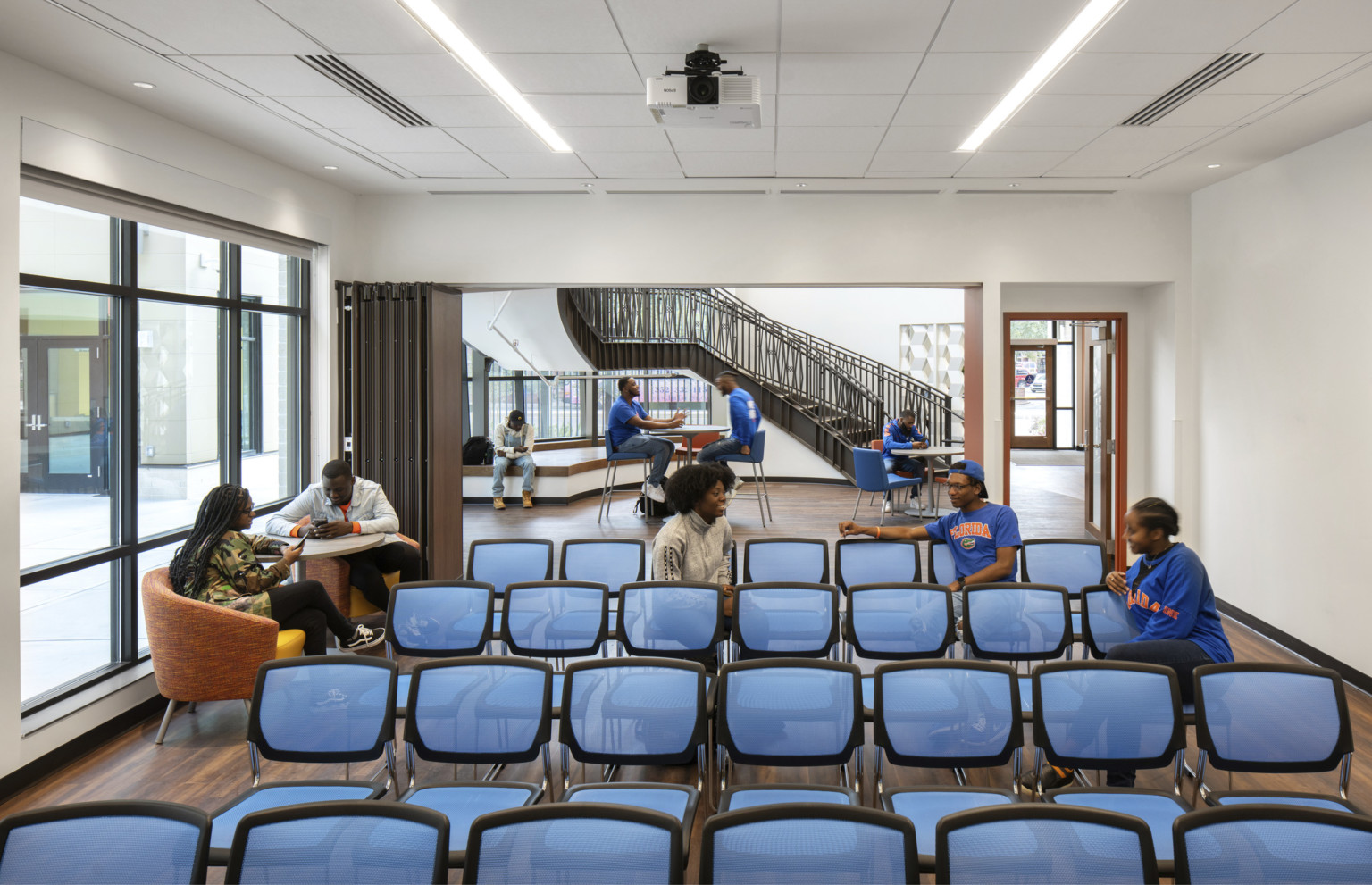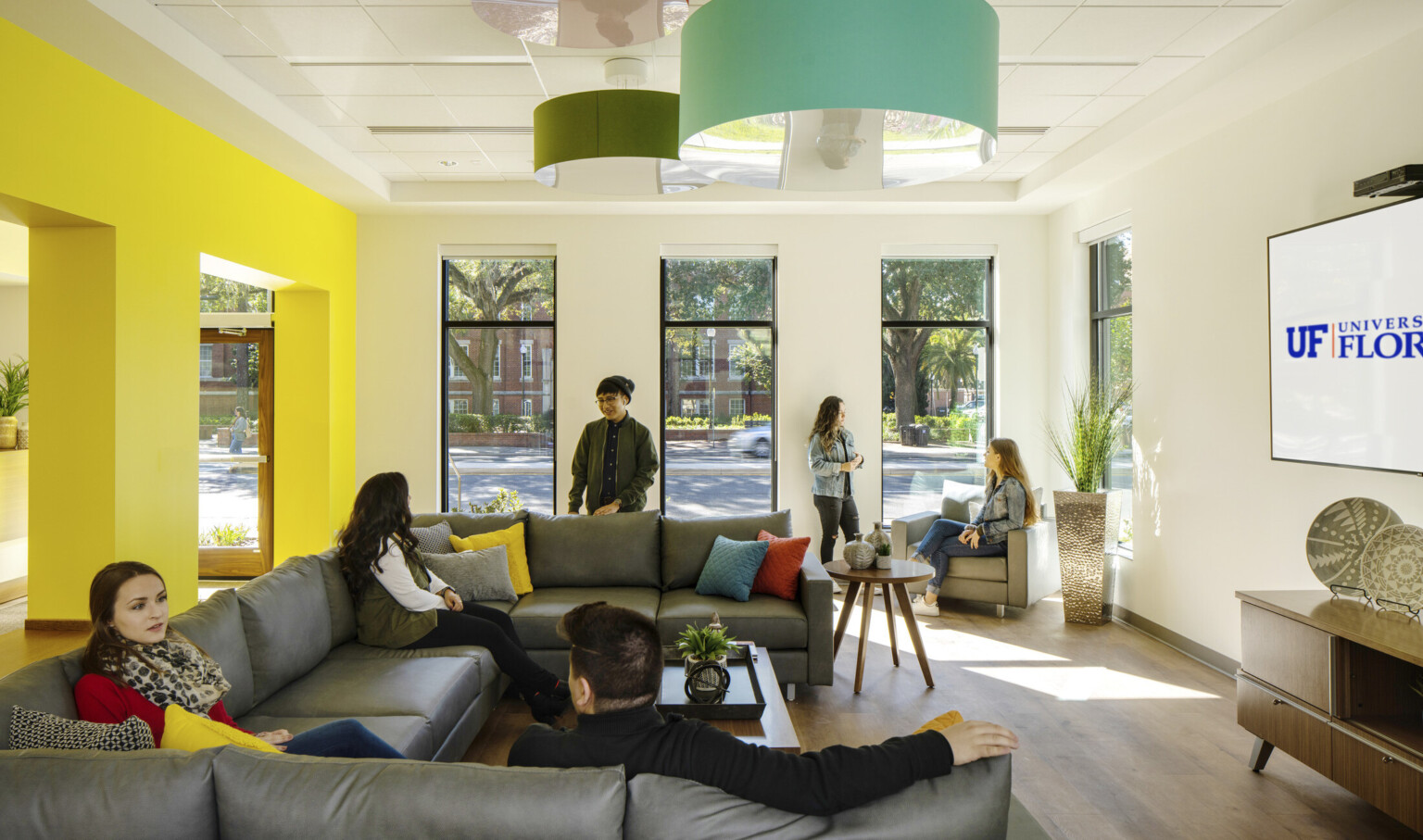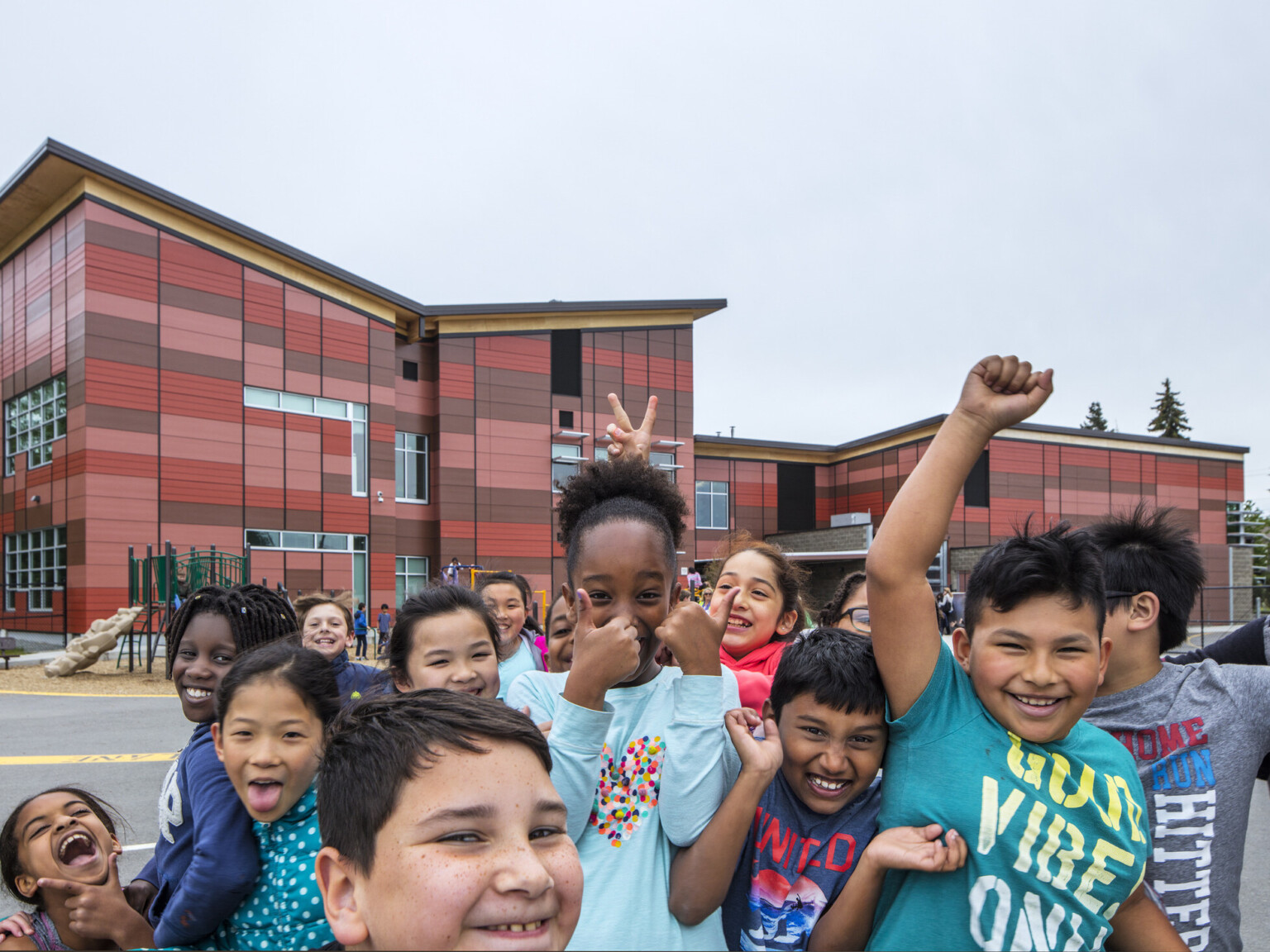
Planning for Equity in Higher Education
To better understand how the conditions of today will impact the campus of tomorrow, we implemented its 360-degree engagement process to conduct personal conversations across 85 institutions.
Our interviews uncovered that the pandemic quickly amplified pre-existing equity challenges among students.
The collegiate experience educates the whole student, and the importance of the physical campus has never been more apparent. Through this pandemic, we’ve learned that many students rely on their campus to provide essential items such as food and shelter – the fulfillment of these needs vanished overnight as campuses shut down due to COVID-19. And the lack of these essentials made it very challenging for students to learn and engage in the virtual space. While the digital environment was presumed to be more accessible – “you can connect anytime, anywhere, on your own terms!” – institutions now understand the need to invest resources and finances that ensure equity among students when they return to campus.

Supporting the Needs of the Whole Student
Many institutions provide support in the form of tuition scholarships; however, students rely on the campus for much more, such as technology, housing, and other basic needs. Through our conversations, we learned that many students now lack the basic needs to continue their education in their home or remote setting. In response, many institutions are delivering more than curriculum; they are providing for clothing, food, safety, and shelter insecurities of students with anything from technology, a textbook, or emergency funding. Institutions have transformed parking lots into drive-thru food pantries accessible by students, as well as community members, or large Wi-Fi access areas to connect students safely from their vehicles.
Moving forward, institutions have realized that support should encompass a holistic support package of both personal and financial needs, not simply tuition-focused dollars.
The Physical Campus as a Support Network
Students find comfort in being together. Campuses provide more for students than solely buildings and spaces to deliver education and support services. At their core, campuses are communities. They nurture important bonds between students, their peers, and faculty, providing an informal support network that is critical as students navigate their college years. Once campuses closed their doors, many institutions found creative ways to keep students connected without in-person contact. For example, virtual student unions are streaming online events such as trivia nights, dance parties, and recreation classes to encourage students to socialize remotely. While these provide a short-term solution for gathering, students are eager to get back to campus, resume their routines, and engage with their peers.
“Being Apart” Emphasizes the Value of Being Together
The pandemic has heightened the importance of common space on campuses, which are vital in supporting the development of the whole student. And the fact that we are recreating these spaces virtually proves their importance and value to students.
Increasing Access While Increasing Equity
One positive result of moving academic instruction and support services exclusively online is the increased access to education for non-traditional students like those who are working full-time and taking courses at night, or caring for family members while also attending college. The pandemic has exposed the ability and the demand for many traditional services that have been inherently tied to physical space, such as tutoring, faculty office hours, and library services, to be available digitally. Institutions have recognized that it is possible to deliver quality education and support to all students, no matter their location, circumstance, or preference, but investments must be made to ensure equitable experiences.
Institutions are meeting students where they are, a trend that should continue as students return to campus. For instance, decentralizing and embedding student support spaces such as advisors and tutors from large centrally located areas directly into academic buildings creates adjacencies between academics, as well as convenient access and high visibility for students who need support. In addition, continuing online services allows students to access services during a time most convenient for them. This hybrid approach offers students the choice to receive the services as they need.
It is important to note that once campuses reopen to students, online-only communication methods should not replace in-person or centralized support. Students should have access to choices ranging from in-person, remote, or a hybrid-approach. With an overnight transition to online delivery, many colleges and universities are now facing the need to invest resources into remote programs that enhance the experience for online students, too.
All stakeholders we interviewed expressed a desire to connect physically, virtually, and emotionally, highlighting that the value of higher education is rooted in connection. Our current situation has underscored that when this connection is disrupted, students are impacted both physically and emotionally and they perceive the richness of their learning experience to be significantly reduced. As a community and an industry, we must work together to bring these elements of connectivity into to the higher education experience while maintaining the diversity of perspective that so many seek from their collegiate experience – and ensure that everyone has the tools to succeed.










